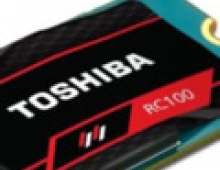OCZ 1000W Fatal1ty Series Power Supply Review
3. Tests
For this test we monitored each of the rails of the PSU under various loads, which represent different power-hungry PC configurations. We took voltage measurements for 200W, 500W 800 W and finally 1000W loads, which are close to the power requirements of a typical gaming system equipped with a single graphics card, an SLI/Xfire configuration, a high-end system with triple or quad SLI/Xfire configuration, and finally overclocked high-end system.
The current ATX specifications allow for the following fluctuations in voltage outputs:
- 3.3V Rail: 3.135V - 3.465V
- 5V Rail: 4.75V – 5.25V
- 12V Rail: 11.4V – 12.6V
An oscilloscope was also used to examining the voltage ripple on the all important 12V rail using the proper capacitors in place to filter noise. This measures how clean the power delivery really is for the tested power supply. The ATX specifications' requirement for ripple is 120 mV for 12V.
The results is illustrated below:
| Voltage regulation | ||||
LOAD |
3.3V |
5.5V |
12V |
12V Ripple |
200W |
3.32 |
5.04 |
12.09 |
6mV |
500W |
3.29 |
5.03 |
12.05 |
12mV |
800W |
3.28 |
4.99 |
11.99 |
19mV |
1000W |
3.27 |
4.98 |
11.97 |
22mV |
As you can see from the results above, the Fatal1ty PSU performs very well across the testing spectrum.
Starting with the 12V rail, we see a a deviation of under 1%, the result of a total drop of 0.15V from start to finish.
The 5V rail stayed within 2% voltage regulation. Finally for the 3.3V rail, regulation was again within 2%.
Ripple results were also great, with the +12V signal to be almost noise-less. DC output quality was generally high, with any noise at the signal to gradually increase as the loads also increased. Under the demanding 1000W load, the noise on the 12V rail was just 22mV.





















